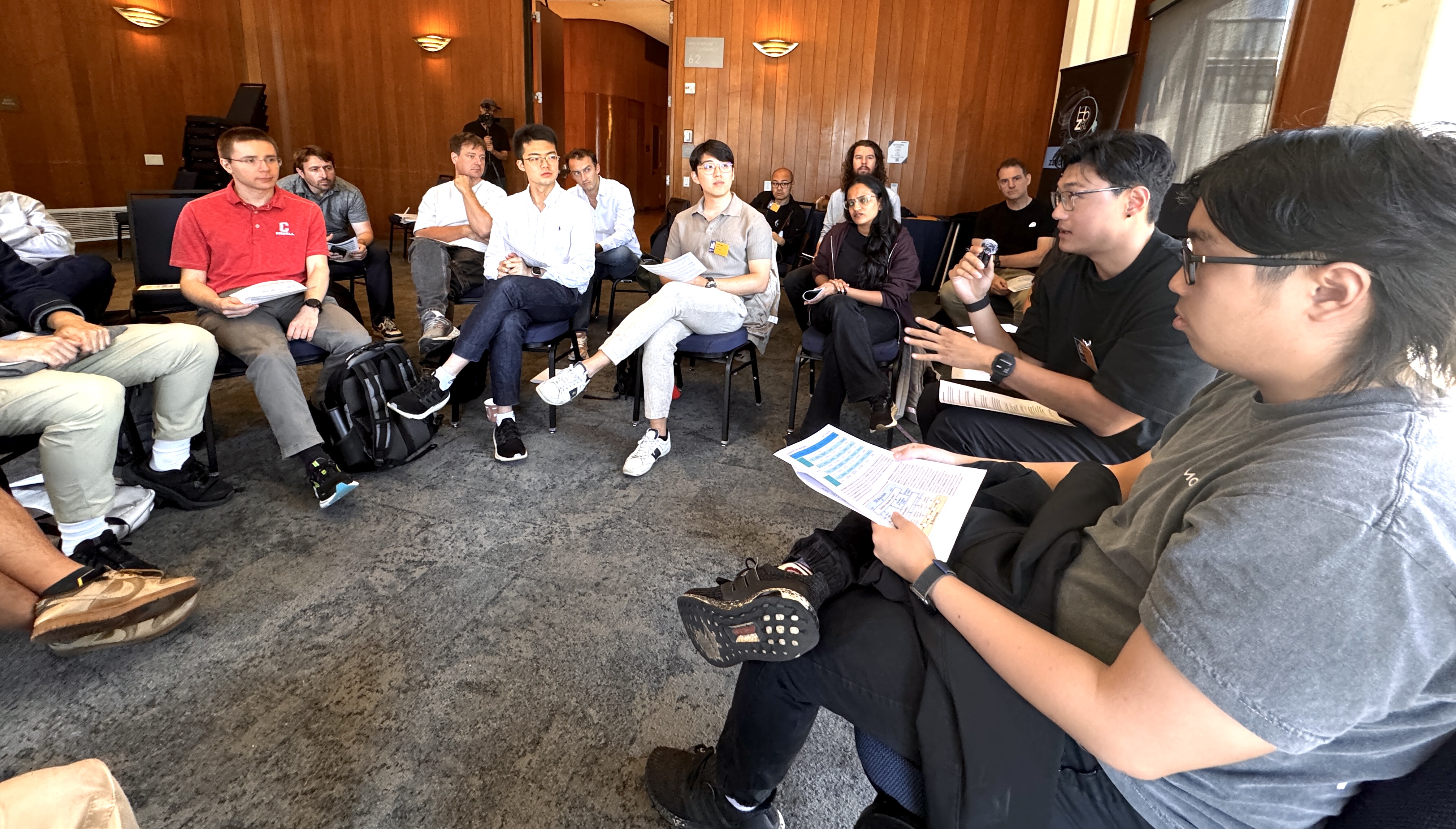
EveOver eight hours, a global audience joined us for six deep-dive sessions into emerging blockchain research. Each paper tackled a different frontier -ranging from trusted execution environments to universal proving marketplaces - sparking rigorous discussion on technical, economic, and security trade-offs.
James Austgen (@initc3org) & @0xfishylosopher (@Pantera)
Core idea: Use TEEs to enable secure, policy-controlled asset sharing without revealing private keys.
Key points:
Paper: https://arxiv.org/pdf/2412.02634v1
Summary: https://docs.google.com/document/d/1GiSpOoYrv_E2svF9ZKAcR9OW9WepNXfl4QMy3YBEMos
Special thanks to @AriJuels and @initc3org for publishing this research and hosting the discussion.

Prof. Muthu Venkitasubramaniam @mvenkita, @ligero_inc)
Core idea: A new privacy framework using MPC-in-the-Head and holographic proofs to go beyond traditional SNARK-based approaches.
Key points:
Link: https://ligero-inc.com
Summary: https://docs.google.com/document/d/1_sjX5MwbzwYVTzvBLEI7IE-YZPZ_efr8IfTDUM9TLp0
Thanks to @Phil_Kelly_NYC for driving the conversation with incisive questions, and @marco_derossi (@MetaMask) for valuable feedback.

Roger Wattenhofer (@TheWattenhofer, @anza_xyz, @ETH_en)
Core idea: Achieving 150ms consensus finality for Solana while maintaining fairness and decentralization.
Key points:
Paper: https://anza.xyz/alpenglow-1-1
Summary: https://docs.google.com/document/d/15pdRrTXEdSNkS_rrnGpdVUPWopf37Z62VM4afmY881U
Thanks to @EmiT87 (@RockawayX_Infra) and @matt_bitcoin (@RunningCKB, @NervosNetwork) for their real-world node operator insights.

Brian Seong (@BrianSeong99, @0xPolygon) & Paul Gebheim (@paulgebheim, @SeiNetwork)
Core idea: Verifiable applications that operate without traditional chain consensus.
Key points:
Paper: https://arxiv.org/pdf/2505.22989
Summary: https://docs.google.com/document/d/1GB78RqqKn5-iaBRWBrGaKn8Rf5m7UBrExRS3fYvz3QY

Conner Swann (https://x.com/YourBuddyConner, https://x.com/TheProofLab)
Core idea: Exploiting the economic imbalance between low gas costs and high proving costs for certain EVM operations in zkRollups.
Key points:
Summary: https://docs.google.com/document/d/14qJvMhwug76r_IPSUbSZ1kjaOiX-Y4GAlzdK9X5onM8
Thanks to https://x.com/prabalbanerjee (https://x.com/AvailProject) for adding context on L2 implications.

Rami Khalil (@hashcashier, @boundless_xyz, @RiscZero)
Core idea: A cross-chain ZK proof verification marketplace, enabling proofs generated anywhere to be verified on any EVM chain.
Key points:
Paper: https://read.beboundless.xyz
Summary: https://docs.google.com/document/d/1SiDEiFjbyqE75xjygtOMR0ev33-eejnhPXiLlUwX_mI
Thanks to @NorbertVadas of @thezkcloud for excellent questions and @prabalbanerjee for insights into competitive dynamics.
Closing
A huge thank you to our co-organizers @whitepaperreadingclub, @initc3org, and @CalBlockchain for making this possible. This was our second collaboration after Devcon last year, and we look forward to building on this momentum together in many more events to come.
Full recordings coming soon to @HouseofZK.